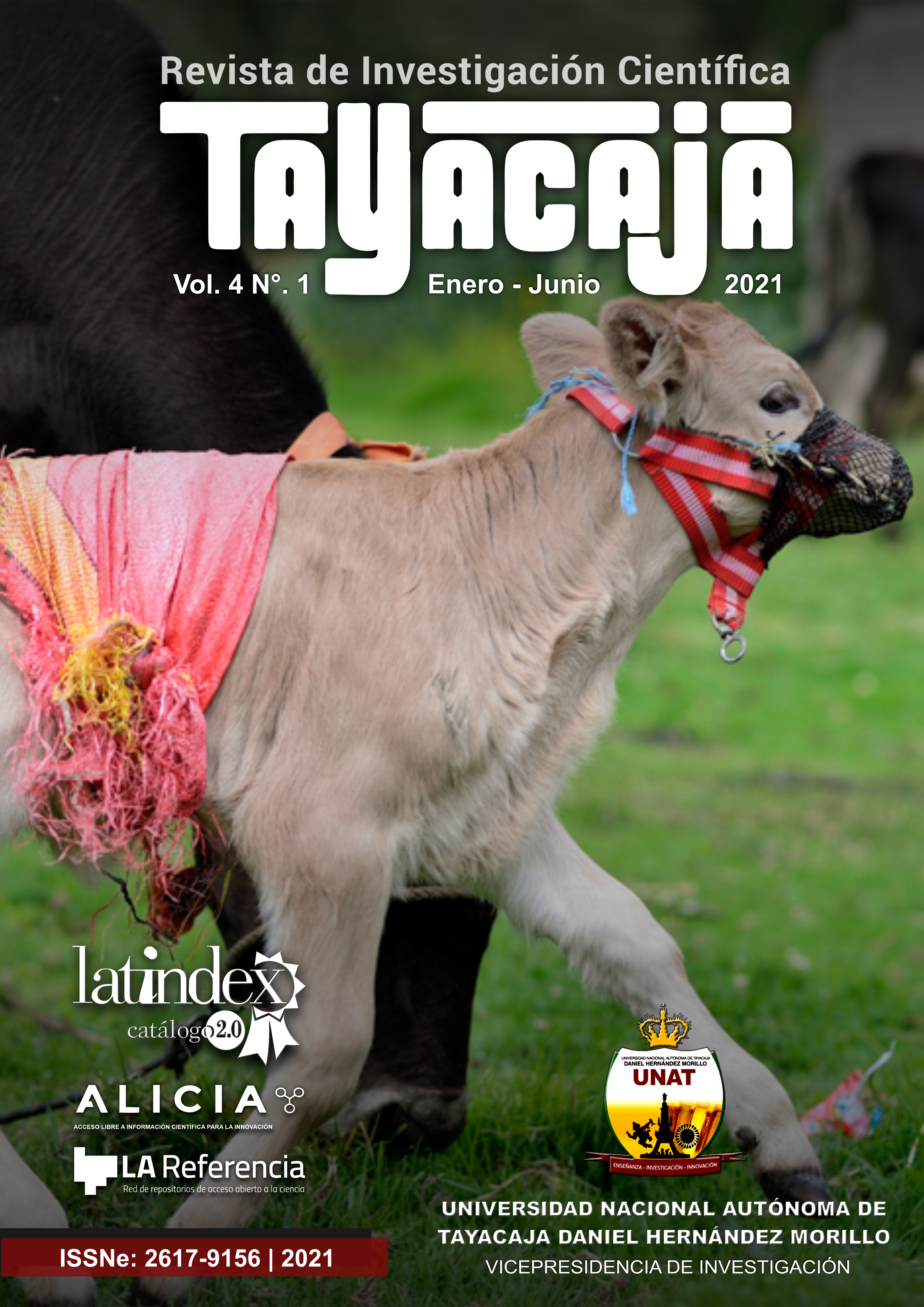Abstract
The present research aims to analyze the development of the complex process of self-construction for the occupation of houses in the district of Chilca - Huancayo, it has a quantitative-qualitative approach with a descriptive, cross-retrospective design. A non-probabilistic sample of self-built homeowners was selected from a block in the Puzo neighborhood, in the Chilca district. The research methodology was analytical in scope and empirical level method, it was used as data collection instruments: technical sheets on the houses and semi-structured interviews with the owners. The results showed that self-construction is a real situation that has gradually increased in the Chilca district and it is necessary to know more about this process to propose actions, policies and responsibilities. The study concluded that in the technical-construction aspect, advice on the matter, quality control of construction materials, and adequate planning and organization of the execution of the work should be carried out. In addition, on the social aspect, there is little information that can contribute to the knowledge of the population, since habits and customs largely define this self-constructive process, the heads of families have rural experience, where housing is only seen as a necessity family shelter.
References
Álvarez, P., y Proaño, D. (2010). La vivienda económica: aproximación desde la arquitectura. Arquitectura y Urbanismo, 256.
Balthazar, R. D. S. (2012). A permanência da autoconstrução : um estudo de sua prática no Município de Vargem Grande Paulista.
Bonduki, N. (2009). Do Projeto Moradia ao programa Minha Casa, Minha Vida. Teoria e Debate, 8–14.
Calvo-Vargas, M.-H. (2015). PROYECTO DE VIVIENDA MULTIFAMILIAR DE UNA EMPRESA NUEVA CON ENFOQUE EN REDUCIR LA BARRERA DE INGRESO MEDIANTE LA AUTOCONSTRUCCIÓN (Vol. 2015) Universidad Católica del Perú.
Alcantara, T. M. (2017). Evaluación de los Problemas de Ubicación y Configuración Estructural en Viviendas Autoconstruidas en la Comunidad Urbana Autogestionaria de Huaycán, Ate, Lima, 2017 Universidad Cesar Vallejo. In UCV.
Candón-Mena, J., y Domínguez-Jaime, P. (2020). La Autoconstrucción De Viviendas En Marinaleda Desde La Perspectiva Del Gobierno De Los Bienes Comunes De Ostrom. Acme, 19(3), 684–706.
Erazo Espinosa, J. (2013). INFRAESTRUCTURAS URBANAS EN AMÉRICA LATINA: GESTIÓN Y CONSTRUCCIÓN DE SERVICIOS Y OBRAS PÚBLICAS.
Ferro, S. (2006). Do Projeto Moradia ao programa Minha Casa, Minha Vida. Teoria e Debate, 8–14.
Bonduki, N. (2009). Nota sobre “O vício da virtude.” Novos Estudos - CEBRAP, 76, 229– 234.
García-Hernández, J. S., y Ginés-De la Nuez, C. (2020). Geografías de la desposesión en la ciudad neoliberal: Ejecuciones hipotecarias y vulnerabilidad social en santa cruz de tenerife (canarias-españa). Eure, 46(138), 215–234.
Guillén-Espallargas, G. (2020). Sembrando en las lindes. Aproximación al análisis de las relaciones entre autocultivo y autoconstrucción en la Barcelona del s. XX. UPCcommons.
Hernández-Flores, J. Á. (2017). Reseñas y comentarios bibliográficos. Ortega, Liliana (2016), Autoconstrucción de vivienda, espacio y vidad familiar en la Ciudad de México. Cuadernos de Economía, 14(20),313–318.
Jiménez, R. (2020). Análisis de vigencia del sistema constructivo LAD-MA para la autoconstrucción asistida de viviendas progresivas. Informes de La Construcción, 72(560), e367.
Linares, S. (2013). LAS CONSECUENCIAS DE LA SEGREGACIÓN SOCIOESPACIAL: UN ANÁLISIS EMPÍRICO SOBRE TRES CIUDADES MEDIAS BONAERENSES (OLAVARRÍA, PERGAMINO Y TANDIL). Redalyc, 14, 27.
Magliano, M. J., y Perissinotti, M. V. (2020). La periferia autoconstruida: Migraciones, informalidad y segregación urbana en argentina. Eure, 46(138), 5–23.
Mattone, R. (2007). Investigación y formación para la evolución de las tradiciones. Los bloques perfilados para la autoconstrucción. Apuntes: Revista de Estudios Sobre Patrimonio Cultural - Journal of Cultural Heritage Studies, 20(2), 318–323.
Moya Fuentes, M., Bia Platas, A., Carrasco Andrino, M., Jiménez Pascual, M., Ramón Martín, A., y Soler García, C. (2017). 3779_Memoria Red en metodologías docentes con TICS 2016/2017: implemen- tación de la plataforma virtual Google Classroom. Memorias Del Programa de Redes-I 3 CE De Calidad, Innovación e Investigación En Docencia Universitaria. Convocatoria 2016-17, 2564–2574.
Pino, A., y Ojeda, L. (2013). Ciudad y hábitat informal: Las tomas de terreno y la autoconstrucción en las quebradas de Valparaíso. Revista INVI, 28(78), 109–142.
Romero Navarrete, L., Hernández Rodríguez, M., y Acevedo Dávila, J. (2005). Vivienda y autoconstrucción. Participación femenina en un proyecto asistido. Frontera Norte, 17(33), 107–131.
Varela, L. D. (2017). La cooperativa copacabana y el barrio la asunción. de la erradicación de la villa 31 a la autoconstrucción de vivienda durante la última dictadura militar argentina (1976-1983). URBANA: Revista Eletrônica Do Centro Interdisciplinar de Estudos Sobre a Cidade, 9(1), 166.

This work is licensed under a Creative Commons Attribution-NonCommercial 4.0 International License.
Copyright (c) 2021 Mayda Alvina Nieva Villegas, Ketty Marilú Moscoso Paucarchuco, Stiven Roland Osorio Capcha, Manuel Michael Beraún Espíritu






